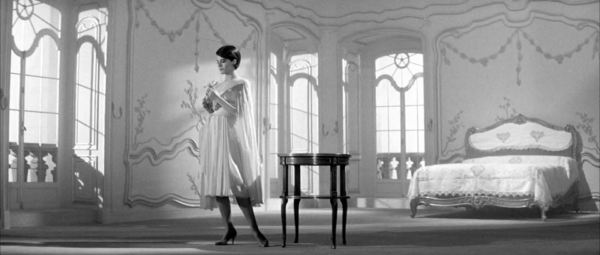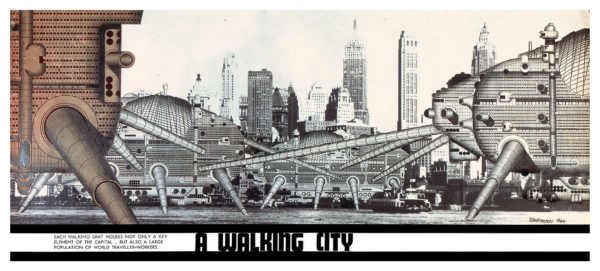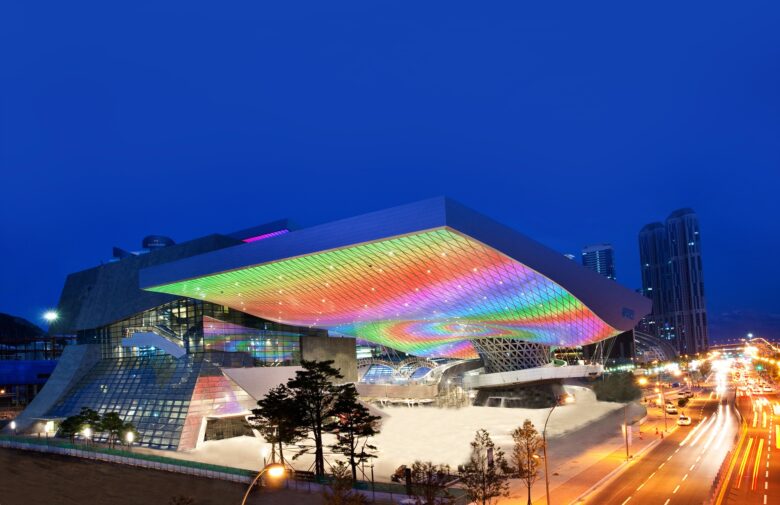Theory of Cinematic Architecture
Narrative

Last Year at Marienbad (1961) by Alain Resnais
In Europe and the United States, it is relatively more active than Japan in representing architecture and urban design with other media and having discussions connecting with other genres to discover something new. In fact, the building is determined as a part of the urban design including landscape design and interior design as a part of the architecture (i.e., city ≧ architecture ≧ interior), and these borderlines are sparse. There are a lot of studies on urbanism and architecture combined with film and art. The books by Juliana Bruno of Harvard University, Anne Friedberg of the University of Southern California and Anthony Vidler of The Cooper Union for the Advancement of Science and Art in New York, talk about the idea of making space and architecture confront each other are well-known In particular. In Europe and the United States, it is relatively more active than Japan in representing architecture and urban design with other media and having discussions connecting with other genres to discover something new. In fact, the building is determined as a part of the urban design including landscape design and interior design as a part of the architecture (i.e., city ≧ architecture ≧ interior), and these borderlines are sparse. Especially there are a lot of studies on urbanism and architecture combined with film and art. The books by Juliana Bruno of Harvard University, Anne Friedberg of the University of Southern California and Anthony Vidler of The Cooper Union for the Advancement of Science and Art in New York, talk about the idea of making space and architecture confront each other are well-known In particular.
For building and urban design, as they have a presence with the physical permanency in architecture and film is temporary and passing-by media, there were rather continuous considerations “to give a movement onto a static object” and interrelate because these two are opposite. A Finnish architect and theorist, Juhani Pallasmaa who wrote the book, “The Architecture of Image”, described ‘architecturally’ about films by Andrei Tarkovsky, Michelangelo Antonioni, Alfred Hitchcock and Stanley Kubrick. He deeply explores the filmic spaces from the viewpoint of an architect.
In addition, in the literature, the works Virginia Woolf addition, the works Virginia Woolf and Marcel Proust that express the “stream of consciousness” in the early 20th century are a trial of visualization of narrative space. Also in the early 1960s in France, a standard-bearer Alain Robbe-Grillet of the experimental literature called ‘Nouveau Roman’ tried to represent architectural space with an extreme action of words especially in “Last Year in Marienbad” (1961) there seems to be a third meaning is revealed with a big diremption between original novel and film. Then, cyberspace and virtual reality came after the 1980s affected architectural space recognition and representation. These were conceptual emergences of them in Science Fiction novels such as Philip · K · Dick’s and William Gibson’s since after the 1960s as well as Italo Calvino’s “Invisible Cities” (1972).
Some people developed the concept of buildings and cities in a two-dimensional space such as paintings and drawings. Italian painter and architect Giovanni Battista Piranesi (1720-78) in the 18th century had a strong impact not only on the neoclassical design of architecture but also subsequently in the contemporary world than since after the 1960s un-building architects such as Rebeusu Woods (1940-2012) and Frederick Kiesler (1890-1965) from Cooper Union in NYC, also avant-garde architect group, Archigram (1761-70) in Architectural Association School of Architecture in London had action in academy and journalism, influencing urban and architectural design in the real world.

Walking City (1970) by Ron Herron
Generally speaking, in the relationship between architectural and urban design with the film we may say Science Fiction films such as “Blade Runner” (1982) and “Solaris” (1972), “Brazil” (1985) based on the neo-futuristic world seem to have gone before films with computer graphics. In the old times, the Avant–garde space expression of films with light and darkness by G. W. Pabst, Robert Wiene’s “The Cabinet of Dr Caligari” (1920) and Fritz Lang’s “Metropolis” (1928) made in the context of German Expressionism in the 1920s had a strong effect on building design later.
On the other hand, Sergei Eisenstein who is the most important filmmaker in film history and established the theory of montage is strongly related to his career in that he studied architecture once before being in the film industry. He was a believer of Le Corbusier.
As mentioned before Chris Marker attempted to exceed space-time in the consciousness and memory in “La Jetée” (1962) made in the same period as “Last Year at Marienbad” in the French Nouvelle Vague and Michelangelo Antonioni’s series of films exposed human psychology in depth using the city elements and landscapes and these series of works impress the presence of both urban and architectural space. A book about David Lynch’s architecture in his films and other assorted essays about film and architecture, ‘The Architecture of David Lynch’ was published in 2014 and the author Richard Martin had a publication lecture at the Architectural Association. Of course, since after films made of computer graphics, as the expansion and growth of the domain of expression, in “Matrix” (1999) a redefinition of architectural space for the 21st century seems to have been made by use of filmmaker’s intelligence based on the theory of parallel space by modern philosopher, Jean Baudrillard with development of the idea of cyberspace. Besides, films like Luc Besson’s ” LUCY ” (2014) and Christopher Nolan’s “Interstellar” (2014) and his other action– entertaining films as if they are seeking a new spatial vision and that attracts many architects very much.

The film and architecture referred to here are not just their designs but include narratives and works that have visual and psychological characters as well. , the narratives created in the field of landscape design, in all countries, are tangible in the old landscape gardens with ‘sequence’ like Shugakuin Rikyu Imperial Garden in Kyoto and Stourhead Landscape Garden in the UK made in the old days and also like the Diana, Princess of Wales Memorial Fountain in London designed by Kathryn Gustafson and opened in 2004.
An example of architectural works under the influence of films that are ostensively known is Robert Mallet-Stevens’ act in the film set design during Le Corbusier’s period like in the 1920s and 30s. In the contemporary world as an architect who made works strongly relating to the concept of the film, we have Bernard Tschumi who described a lot about films such as ‘ciné-gram’, Nigel Coates (narrative: he wrote a book ‘Narrative Architecture’ in 2012), Rem Koolhaas (edit: He studied film in Holland then moved to AA to study architecture.), Jean Nouvel (light and shadow, sequence), Steven Holl (light and shadow), Herzog & de Meuron (translucency, sequence) and Coop Himmelb(l)au (temporality, sequence: Their Busan Cinema Centre was opened in 2012.). Also, David Adjaye and Alberto Campo Baeza emphasise the meaning and presence of light in architectural space. Wim Wenders was intrigued by Sanaa’s Rolex Learning Centre which was enough to make his film titled “If Building Could Talk” (2010) out of the building and he expanded the idea that each architecture possibly has its narrative that became a production of a long-length documentary film, “Cathedrals of Culture”(2014).

In this particular area architect, Ryoji Suzuki’s effort is significant in Japan. Instead of taking the theory of cinematic architecture as just idealism, he attempted to get close to the meaning of space rather than ‘materiality’ with his space installation, making films with 16mm and talking deeply about architectural films and no one else ever did like this before. Therefore he is the one and only person for cinematic architecture in Japan. It is expected that his books with his excellent film critics such as ‘Architectural Films Material Suspense’ (2013) will be translated into foreign languages. Also, an architect, Arata Isozaki, declared various possibilities to develop the design theory connecting with intellectual confines separating the idea of ‘architecture’ from ‘building’ by relating contemporary philosophy and theory of urbanism or art to architecture and urban design.
Thus, in this way, by referring to the elements of the other media, traversing, the notion of cinematic architecture and experimenting with radical fusion of film and architecture gives various possibilities for the design and architectural field. (Keiichi Ogata)
